I’ve been putting miles on the 1974 RD350 in the last few months, almost doubling the 4100 miles that showed on the bike’s odometer when I first got it. As my confidence in the bike increases so do the miles racked up in a single ride. This increase in running time has led to a problem with the battery that was installed in the RD350.
The battery seemed to work okay; it held a charge and didn’t use too much electrolyte but the fill plugs located on top were seeping a bit of acid. The caps felt snug and the battery vent was not clogged yet after a long ride the acid-damp lay heavy on the battery and even started dripping down the sides. I sort of let it slide for a while. Riding the RD is too much fun and stopping the bike for maintenance seemed like a waste of good weather.
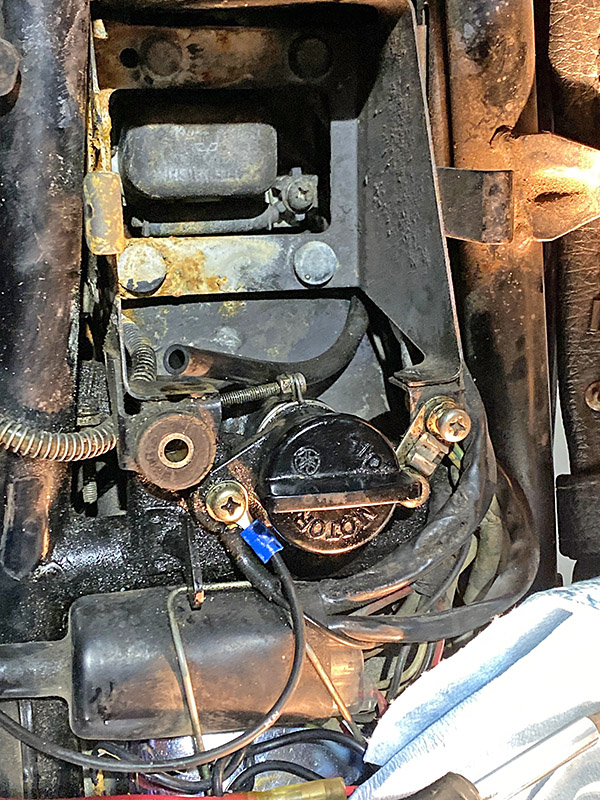
Now that it’s a bit cooler I tackled the battery situation. The acid had dripped down onto the swing arm and corroded the battery box along with the small coil spring that keeps the oil tank vent from kinking. My laziness always comes back to haunt me.
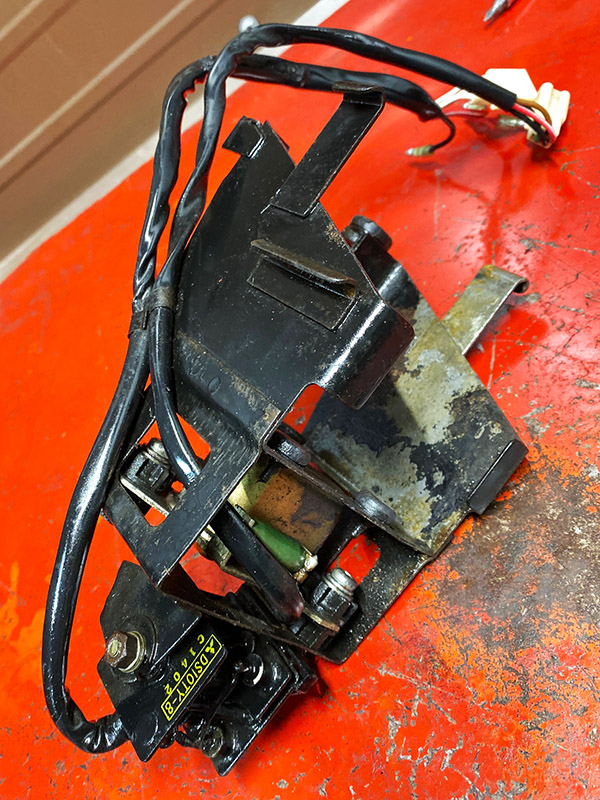
I took the battery box, along with the attached rectifier and voltage regulator out of the frame and washed everything down with a mix of baking soda and water. The affected paint fell off in large chunks. I dismantled the electrical components and soaked the battery box in Evap-Rust then wire brushed any loose paint.
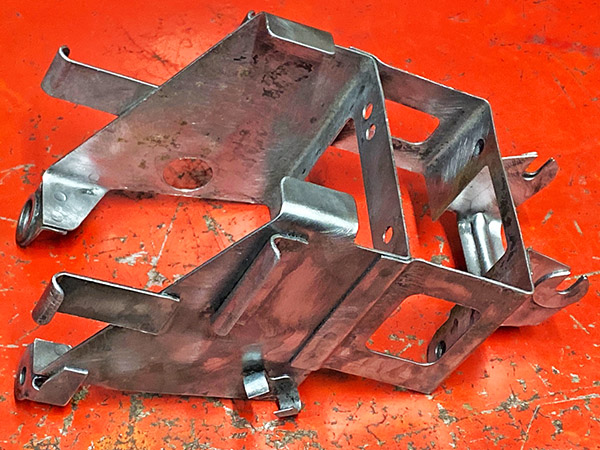
It was a nippy week at The Ranch so painting the box in 50-degree weather was a challenge. I heated the rattle can and the battery box to within 2.8 degrees of each other (measured via a recently calibrated fingertip) then shot the box with primer and two coats of Krylon satin black. I used a brush to apply paint to the bare spots on the swing arm.
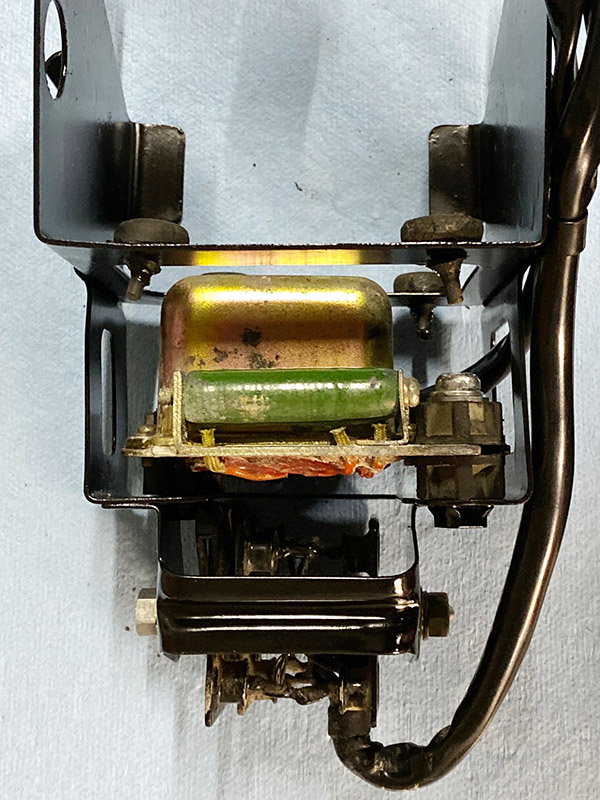
It all came out good enough and anyway, I’m riding this bike, not showing it. The electrical bits, being directly under the battery did not suffer any acid corrosion. I cleaned them up and reassembled the mess into the motorcycle.
Many older motorcycles do not regulate their voltage as precisely as you would like and my Yamaha RD350 is one of the many. With the headlights on and engine revving I measured 14/14.1 volts at the battery. This is ideal. With the headlights off 15 volts were going into the battery. 15 volts is a little too high for comfort but I decided that since I leave the headlights on all the time the original regulator would be okay.
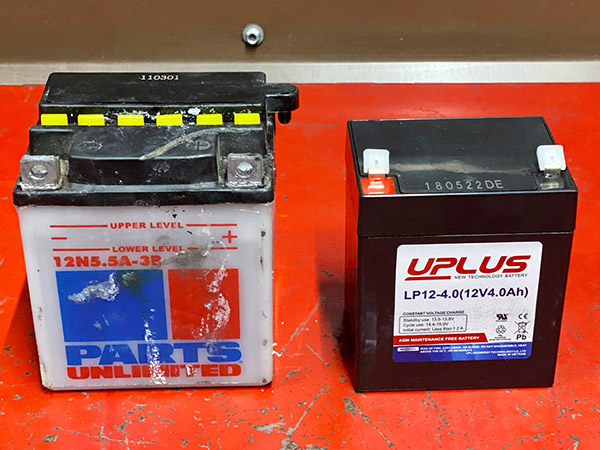
My good buddy Deet told me about using sealed, AGM type, alarm-system/UPS batteries in old bikes. I have had one of them in Godzilla, the 1971 RT1-B for a couple years and it has been working great. These type batteries hold a charge much longer than flooded lead acid batteries. The new one I bought on Amazon has a high tolerance for high voltage; it can handle up to 15-volts charging. These AGM standby batteries can withstand constant trickle charging and long periods of inactivity, which describes vintage motorcycle riding to a tee. The small spade terminals on these batteries are not made for large current loads like an electric starter or lighting up the strip in Las Vegas but they can handle motorcycle lighting and ignition circuits without complaint.
At 4AH the new battery has a bit less capacity than the leaky old 5.5AH unit I took out but I think it will work okay. Close enough counts in hand grenades, horseshoes and motorcycle batteries.
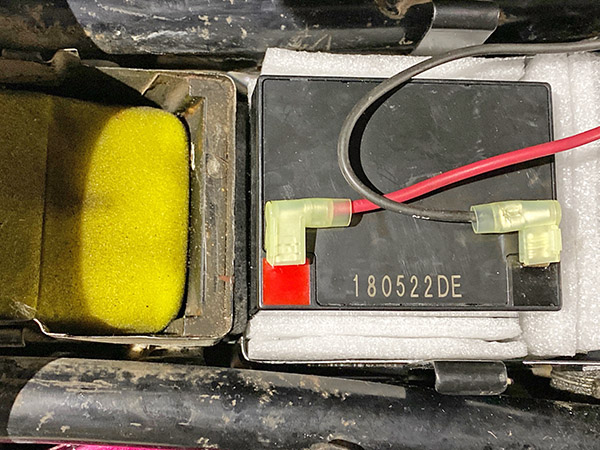
The new battery is a skosh smaller than the old battery so I used some closed-cell packing foam to keep the thing from rattling around inside the battery box. The RD350 is once again ready to rumble. From my experience with the RT1-B, I’m not anticipating any problems with the RD350 but I’ll be sure to let ExhaustNotes readers know if I have any issues with the new AGM set up.
Do a friend a favor or ten: Click on those popup ads!
Never miss an ExNotes blog:

